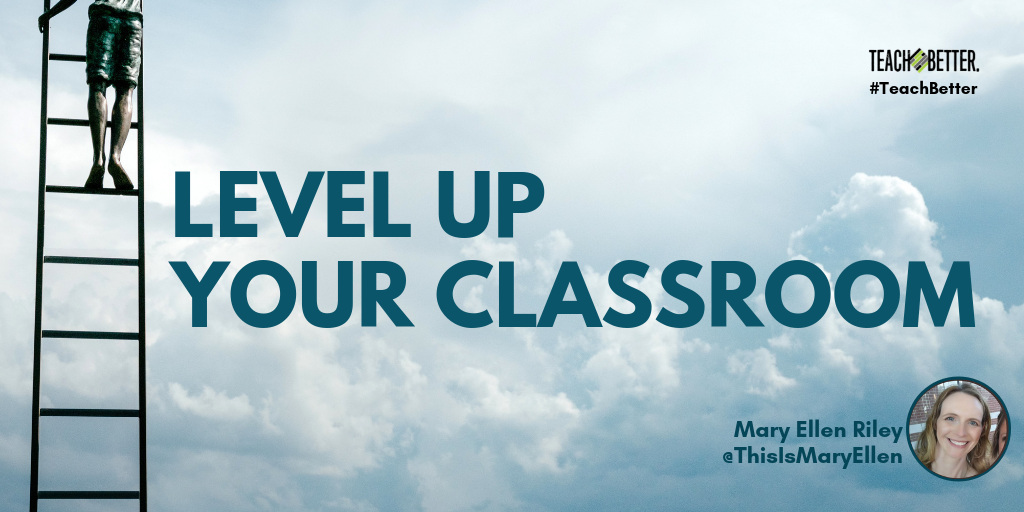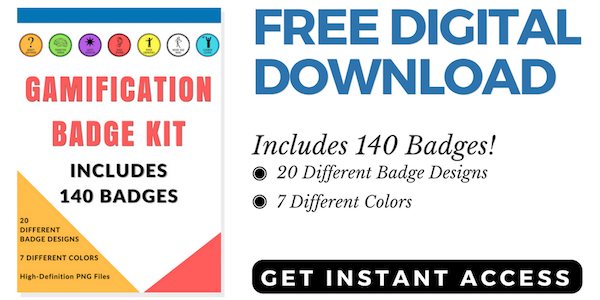In This Post:
- Consider gamification to level-up your classroom.
- Gamification is simply adding game elements to something that is not a game.
- Students love games and may be more engaged, and more likely to retain the information when gamified.
- Several examples of tools to gamify any unit.
Ready to make your school year memorable (in a good way)? Want to add more positivity and collaboration? Want to see more initiative in your students? Of course, you do! You are a great teacher – which is why you are on this website finding more great things to add to your classroom and become the best teacher you can. Consider gamification in order to level-up your classroom.
Since levels are included in The Grid Method, I think this plan works seamlessly with my current structured classroom!
What is Gamification?
Gamification is simply adding game elements to something that is not a game.
Why use gamification in your classroom?
- Engagement! Students love games! My students will do anything to win a game! I have a classroom full of pretty competitive students, and once we start playing a game they are HOOKED.
2. Higher retainment of information! Many review games and practice games have students work on their skills. They want these skills to level up, and you want them to have these skills so that they are successful. Learning science has shown that self-testing is one of the BEST ways to increase retainment and retrieval of information.
3. Learning can be fun! There, I said it. It’s true!
4. Collaboration – Students are on teams to reach levels and achieve points. You can shape this however you like. Students are often in groups or pods in the classroom and we can use that opportunity.
If you teach science, maybe a theme could be Star Trek. The sky is the limit! Share on XHow should you do it?
- Whole Classroom Game; or
- Activities throughout the Unit; or
- Gamify just the Unit
Some items to consider when creating a whole classroom game:
Theme: What will your theme be? Some examples may depend on your game function. Large classroom gamification themes encompass many aspects like illustrated in Harry Potter World, Star Wars,Lord of the Rings, Dr. Suess, Medieval Times, Wild West, etc. If you teach history, maybe a theme could be Knights and Castles. If you teach science, maybe a theme could be Star Trek. The sky is the limit! I am using a whole classroom version and will be using Star Wars. I have seen Harry Potter as well. Or you can simply give your math class groups names such as “Linear Leaders” or “Pi-rates” or “Systems Syndicate.”
Setting: What could you add to your decor that will enhance the theme? This doesn’t have to be expensive. A few well-placed posters and maybe some wall stickers for educational and design purposes, maybe even a bulletin board or some images incorporated into slideshows could also be used.
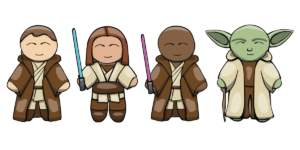 image credit: Chas Grundy
image credit: Chas Grundy
Characters: What kind of groups will the students be in? Guilds, Teams, Communities, or Houses like in Harry Potter. Students will need to be grouped early to earn team points and team rewards. I use the Bartle Test to classify students into 4 categories in order to have a mix of personalities in each group. Of course you could do homogenous groupings, heterogenous groupings, random groupings or whatever works best in your classroom. My Star Wars groups will be called “orders” and I will have the group choose their name. Here is a Google Form that the students can fill out and I can use to form groups.
Actions: List of tasks, routines, conflicts or missions the students must take. These actions will earn the students XP points. Some of examples I will use include: homework is finished, homework is out and ready to check at the beginning of class, all calculators and items are put away in their designated spot, participation, and ready for the Friday Vocab quiz.
[scroll down to keep reading]Game Mechanics you may want to use to start Whole Class Gamification:
Experience Points (XP): Students earn XP points every day in class. I track the XP using a spreadsheet. This spreadsheet contains the tabs for each class and also a tab for a leaderboard. The leaderboard shows who is at the top of the class in XP and where everyone is at — these are anonymous and the students pick their own names. Though most seem to share even when I keep them confidential. It is up to you to decide how many XP points and what they are for.
I am choosing to use XP for everything EXCEPT academics. That way – my lower B and C students can actually be at the top of the entire leaderboard when they may not be at the top of the academic GPA. I divided up the school year and then decided on 20 XP points per day which includes showing up, putting items away, having done the homework and participation. Note the homework is not checked for points – I don’t grade homework and use it for the students to practice.
All students start at zero – just like in a real game. When you started playing Super Mario, you start at zero points. The same happens in the classroom. Students must EARN these. You could also make the XP points part of the group award. So the entire table must be clear at the end of the class period for the team to earn XP for example.
Badges: Badges can be awarded for anything you like. Think of them like Girl Scout badges for accomplishing something and proving proficient. I will use them for when students move up a level in the Grid. I will also use them for their “Jedi status” in my Star Wars theme. Another teacher uses them in his Harry Potter theme. You can also include badges for the entire team – say they all receive 90% or higher on a quiz or test. Then this could be an extra badge which earns them a turn in the rolling chair. Or earns them the ability to eat snacks in the classroom. Or earns students the ability to choose their seat. Or they could bring a favorite stuffed animal for the day – whatever is appropriate for their age level. **I allow very few tangible rewards. I want the learning to be intrinsically motivated. Not motivated by the rolling chair.
(Here is a link to my spreadsheet for my badges and items. We will go into items in another post!)
How do you keep track of points and badges?
I have a couple badge trackers. There is a simple one that I use. They are laminated and then dry erase markers can change the XP each day. The badges can be created and put on the board. The boards are hung up in the classroom. Here is the simple one. Here is the more in depth one. I have an idea to make my own custom 1″ removable stickers for badges. I found them on Amazon here. Though …. I may run out of time and just buy stickers instead.
**Please note on this system: Students are always reminded that the game is in development. Sometimes things don’t work the way you thought and that is OKAY!!!! Just be patient with yourself and keep students in the loop.
**Also, this system is NOT the whole class. It is a small part of the classroom. Your badges could be “collaboration” or “creativity” for example. These skills truly matter and are part of the focus of the lesson.
But, listen – I need to start SMALL!
Hey, that is fine too! Here are some links for adding game elements into your classroom without having to design an entire game:

image credit: quizizz.com
Quizzizz – Oh Quizziz how I love thee. Free editing. Can be assigned as homework or competition in class. Tons of free quizzes already made. I usually find my standard and create a duplicate. This duplicate is added to my account and I tweak it to fit my class.

image credit: gimkit.com
Gimkit – A review game on steroids. The pieces of a game are already incorporated into a review game – while reviewing the students can earn money and use it to ice one another, use it to buy insurance and other in-game items. You cannot edit without paying a fee. Once you make a quiz yourself, you have one edit and if you make a mistake Gimkit won’t allow you to fix it. But it is highly entertaining and it can be used not only as multiple choice but fill in the blank.

image credit: quizlet.com
Quizlet Live – My students used this a lot for vocabulary. Make sure to check and see if the vocabulary list hasn’t already been created! I noticed I was able to find them all without making a list because someone else already had one published.
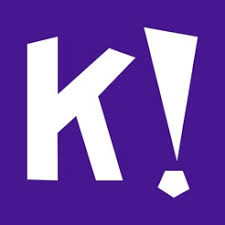
image credit: apps.apple.com
Kahoot – A classic game although I have not used it in quite some time. When we play games with other schools online Kahoot will not work well because the students can’t see the question. But give it a try – most kids like it much more than a worksheet.
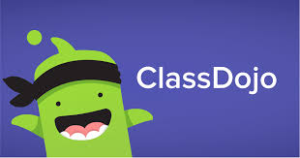
image credit: classdojo.com
ClassDojo – As a parent and teacher, this tool can be used for communicating with parents. Students earn points for various items (think of it as XP) and then you can offer a reward when they hit 10 points or another point value. 100% free.

image credit: classcraft.com
Classcraft – This version of ClassDojo is more for middle and high school students. Students are on teams and can earn points for their team and individually. There is a free version and a paid version. The free version allows you to do a lot from parent features to customizable characters.
[CLICK HERE TO READ “GETTING STARTED WITH CLASSCRAFT”]
As we head toward the new 2019-2020 school year, I bid you:
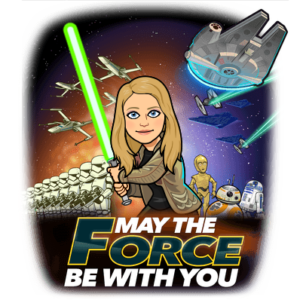
About Mary Ellen Riley
Hello! I am Mary Ellen, a wife, mother of two, certified K-12 teacher, and crafts and coffee lover. As a mother and teacher of gifted students, I provide practical support throughout my schools for all students who need more depth and enrichment.
Visit Mary Ellen’s Websites:

